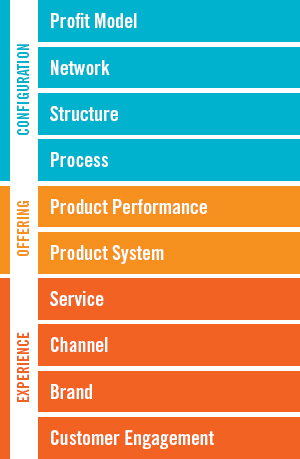Chapter 2
The Ten Types
An Overview
The Ten Types framework is simple and intuitive. It is a useful tool you can use both to diagnose and enrich an innovation you’re working on, or to analyze existing competition. It makes it especially easy to spot errors of omission—missing dimensions that will make a concept stronger.
The Ten Types framework is structured into three color-coded categories. The types on the left side of the framework are the most internally focused and distant from customers; as you move toward the right side, the types become increasingly apparent and obvious to end users. To use a theatrical metaphor, the left of the framework is backstage; the right is onstage.
Several lessons will emerge from the Ten Types throughout this book—including how to use the framework as a way to identify opportunities, and how to use it to construct sophisticated, defensible innovations.

Configuration
Offering
Experience
This is not a process timeline, nor does it imply sequencing or hierarchy amongst the types. Any combination of types ...
Get Ten Types of Innovation: The Discipline of Building Breakthroughs now with the O’Reilly learning platform.
O’Reilly members experience books, live events, courses curated by job role, and more from O’Reilly and nearly 200 top publishers.

